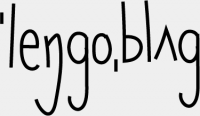The privileges and challenges of a ‘first language’ English speaker and language learner
Today Lingoblog celebrates English Language Day with this post by Claire French.
In the lead-up to English Language Day this year, I have been thinking through the privileges and challenges of existing in the world, and in new languages, as a ‘first language’ English speaker.
The concept of ‘first language’ is of course a troublesome notion because of how it suggests that I speak the language more ‘correctly,’ or hold further ‘fluency’ than those speaking it as a second language, which sociolinguists know to be unqualified and ideological. Yet, it is not my hold over the language that is most noticeable to the multi-bilingual/global majority when they first come into contact with me, but the sound of my variety.
As … ↪








